
Lene Berg.
Henie Onstad Kunstsenter, Norway
Caroline Ugelstad, curator
Nathalie Djurberg.
Moderna Museet, Sweeden
John Peter Nilsson, curator
Leandro Erlich
Fundación PROA, Argentina
Debbie Grimberg, curator
Wang Jianwei
Ullens Centre for Contemporary Art, Beijing, China
Curador: Anselm Franke
Ali Kazma
The Institute for the Readjustment of Clocks albergado por the Koç Foundation, Estambul, Turquia
Emre Baykal, curador
Shahryar Nashat
Kunsthaus Zürich, Zürich, Switzerland
Mirjam Varadinis, curator
Cornelia Parker
Whitechapel Gallery, UK
Anthony Spira, curator
Diego Perrone
Galleria d'Arte Moderna e Contemporanea di Bergamo, GAMeC, Italy
Alessandro Rabottini, curator
Ryan Trecartin
Ballroom Marfa, Marfa Texas, USA
Alicia Ritson, curator
Lene Berg.
Henie Onstad Kunstsenter, Norway
Caroline Ugelstad, curator
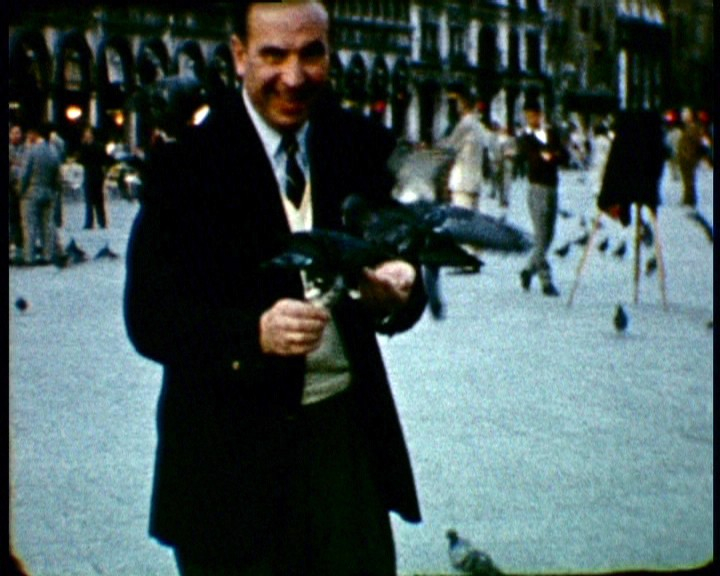
The Man in the Background, 2006
20’00”
DV-Cam and 8mm transferred to DVD
Courtesy the artist
The video is built around a sequence super 8-images, representing Michael Josselson, the director of the organization Congress for Cultural Freedom (CCF) (1950-1967), on holiday with his wife Diana in 1958. What the images does not show, however, is that Michael Josselson was a CIA-agent and the CCF a secretly financed CIA-organisation.
Lene Berg was educated a film director at a Dramatiska Institutet in Stockholm. In 2008, she was the Norwegian fellow of the International Studio and Curatorial Program (ISCP) in New York and participated in the Sydney Biennale. She has taught and had workshops at several art schools in Scandinavia, such as the Art academies in Stockholm and Oslo. Characteristic for her work is the mix of medias and fictions within the same project, and the use of so-called real persons and events as points of departure in her projects.
Nathalie Djurberg.
Moderna Museet, Sweeden
John Peter Nilsson, curator
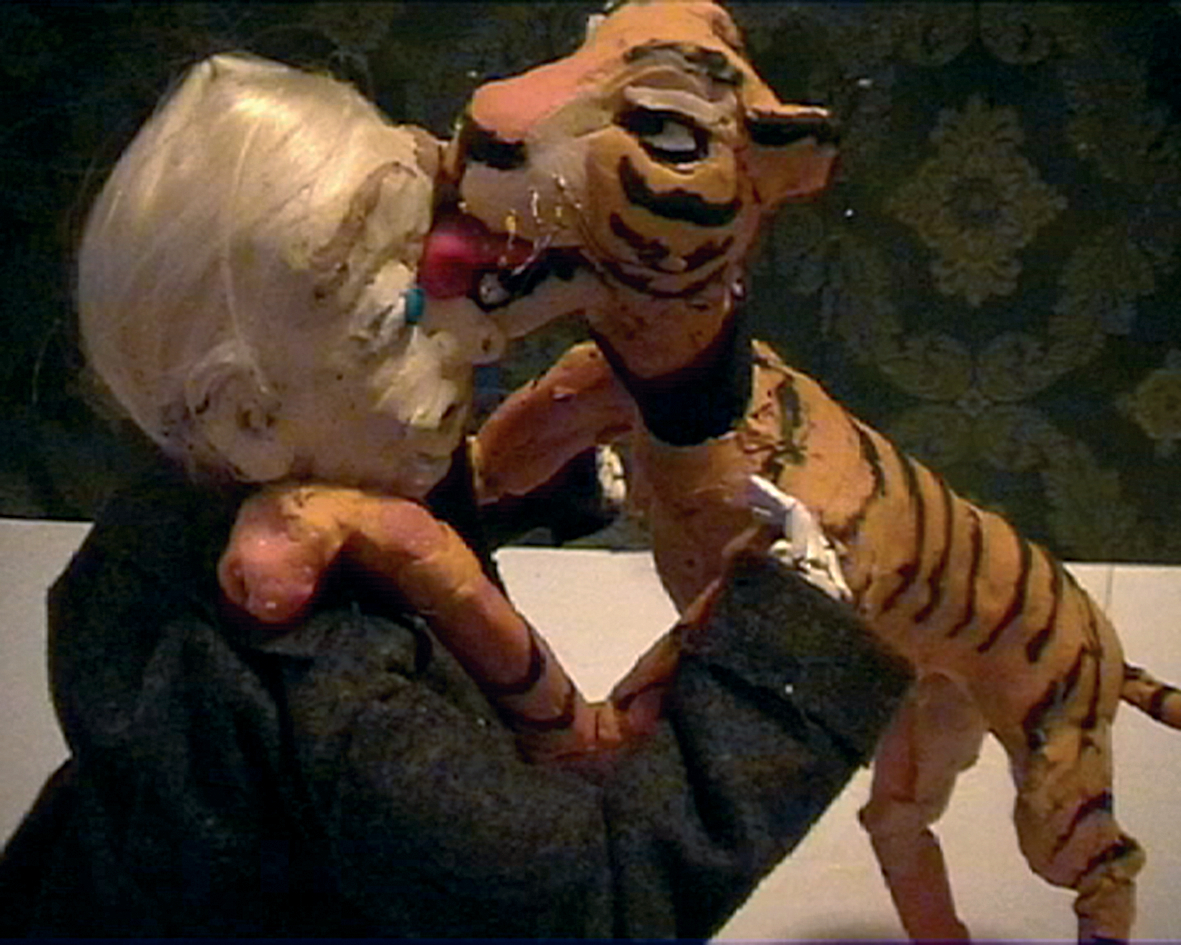
9’46”
Film tranferred to DVD, color, sound
Copyright Nathalie Djurberg
Courtesy of Zach Feuer Gallery, New York and Gió Marconi, Milan
The animated figures are made of plasticine and they move around in drawn or crudely built sets. The format is similar to that of children’s TV programmes and there is an undeniable feeling of being a child again as we watch. The world is vast and contains exciting new things. Soon, however, we realise that the exciting new things have a dark and threatening side.
Nathalie Djurberg was born in 1978 in Lysekil, Sweden and received a master's degree at the Malmö Art Academy. Djurberg has had solo shows at the Hammer Museum in Los Angeles, at the Prada Foundation, Milan; Kunsthalle Winterthur, Switzerland and Kunsthalle Wien, Austria. Her work has been featured in exhibitions at Tate Modern, London; Solomon R. Guggenheim Museum, New York and Hamburger Bahnhof, Berlin. In 2008, she was awarded the Carnegie Art Award, a scholarship for young artists. Djurberg lives and works in Berlin.
Leandro Erlich
Fundación PROA, Argentina
Debbie Grimberg, curator
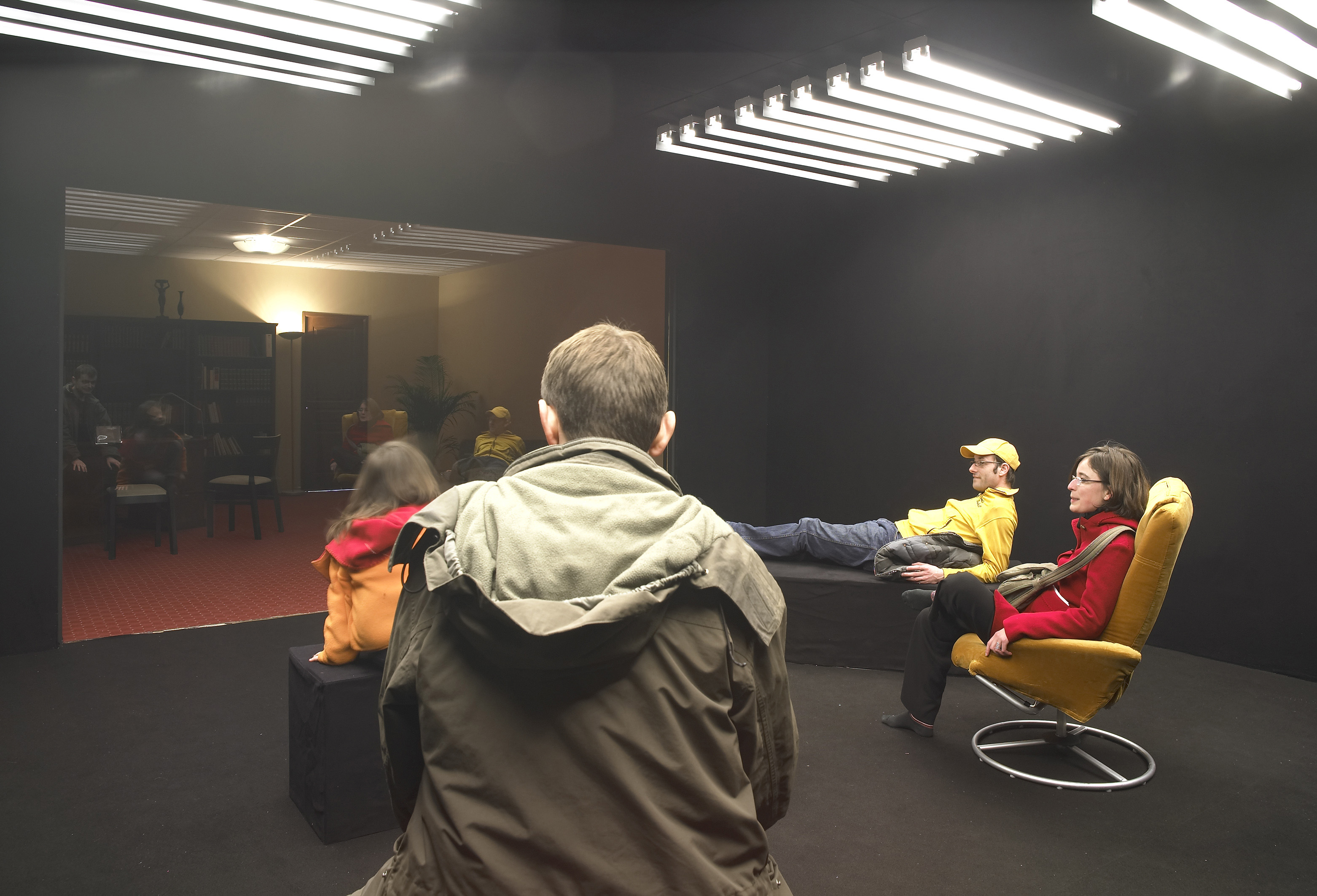
El consultorio del Psicoanalista, 2005
2’20”
DVD
The action takes place in two spaces separated by a glass: a psychoanalyst’s room—complete with furniture and objects that identify it as such—and an empty space with a few scattered cubes throughout where the spectator is expected to enter. The moment the spectator sits on the cubes, his or her image is reflected, through the glass, onto some real object in the other room (the psychoanalyst’s or the patient’s chair). In this work the public assumes the role of performer and the video makes it possible to experience how the work is articulated by means of the interaction of the public.
Leandro Erlich was born in Buenos Aires in 1973. He lives and works in Buenos Aires.
The recurrent themes throughout his oeuvre are reality and appearance, illusion and defamiliarization, His works alter the perceptual field, demand concentration and shake the spectator. His work has been exhibited internationally for over ten years. Currently, he is presenting an installation at the Museo Nacional Centro de Arte Reina Sofía, in Madrid.
Installation
Mixed media, simetric spaces, glass, furniture
4,50 x 2,60 x 9,00 mts
Fundación PROA presents Leandro Erlich’ El consultorio del Psicoanalista, (2005). The installation was first exhibited at the Centre d’Art Contemporain Le Grand Café (Saint Nazaire, Francia), in April, 2005. As a complement and support of the video exhibited in Art in the Auditorium, the installation proposes to reflect and question about Concepts such as scenery, performance, document and backstage.
El consultorio del Psicoanalista is presented for the first time in Buenos Aires, a city hving a pscichoanalitic tradition. In a brief conversation with the Foundation, Erlich comments:
“The work was developed in Paris where I lived until 2006. It is peculiar, because I have been born in Buenos Aires and as much in Paris as in our City the psychoanalysis, has made school (…). In the installation, the spectator interacts and generates a fiction that a metaphorical image constructs as well. Our “fantasmagoric reflect” moves within a space related to the reflection. El consultorio del Psicoanalista is a place where to go and treat subjects related to our existence, and our reflect is a state of conscious about it. (…). The participation of the public is essential and the reactions are multiple. Most of the times, a playful experience is produced by the surprise which generates upon the recognition of the scene. Perhaps the most surprising -because not wise it at first- is the proximity that the work has with some optical experiences that Lacan has used to represent and to explain certain subjects of the psychoanalysis”.
The installation has been exhibited at Galería Nogueras Blanchard, Barcelona (2005); Galería Brito Cimino, São Paulo (2006); Galerie Emmanuel Perrotin, Paris, (2006).
Wang Jianwei
Ullens Centre for Contemporary Art, Beijing, China
Curador: Anselm Franke
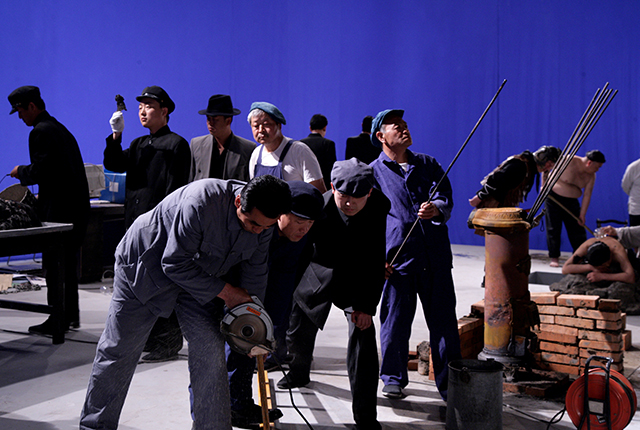
Symptom, 2007
33’00”
Video
One of his latest video works, it could be seen as a monumental Tableau Vivant presenting what could be China itself, as a haunted space, where a series of asynchroneous spaces coexist (and collide) on one stage.
In his work, one may find metaphors, spaces, narratives, histories, in which the object itself constantly disappears. This disappearance is not an aesthetic effect of his work as such, rather, it is the precondition of something else to emerge.
Born in 1958 in the Sichuan Province in China, Wang Jianwei is one of China's best-known conceptual artists. After developing a career in oil painting for many years, he shifted his practice to performance works, video installations, playwriting, and documentary filmmaking. Jianwei applies an anthropological method to his work through which he builds a visual inventory of Chinese urban society and its evolution. His video works include both documentary-style productions to more theatrical efforts, often exploring the relationships of power within China's changing social and economic landscape. He was the first Chinese artist to participate in Documenta in Kassel, Germany (1997).
Ali Kazma
The Institute for the Readjustment of Clocks albergado por the Koç Foundation, Estambul, Turquia
Emre Baykal, curador
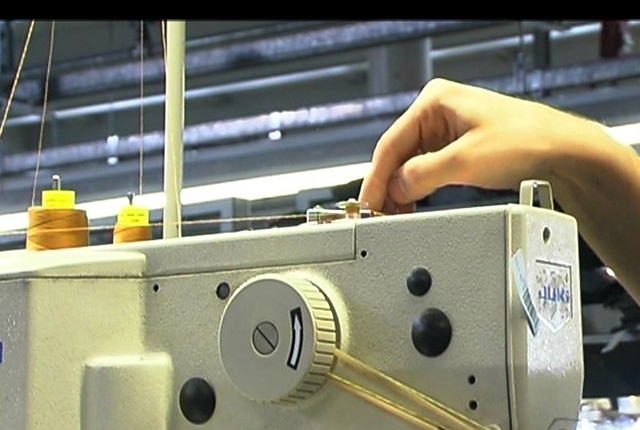
Jean Factory, 2008
11’40”
Colour video, sound
Courtesy the artist and Francesca Minini, Milan
Ali Kazma captures the work at a jeans factory, an amazingly complicated mode of mass production is utilized to provide a protective and comfortable shelter for the body. This video, one of eight chapters in the series Obstructions to the Second Law, brings the creation of the global cultural codes of fashion to the foreground. In his works, Kazma enters other places of production, repair and maintenance, such as a surgery room in a hospital, the workshop of a clockmaster in Dolmabahçe Palace, a steel factory in an industrial area near Istanbul, a slaughterhouse, a jean factory, places of production which are not visible in our daily life.
Ali Kazma was born in 1971 in Istanbul. He is a video artist, graduate of the New School in New York City. In 2000, he returned to Istanbul, where he still resides. His videos raise fundamental questions about the meaning and significance of human activity and labor and the meaning of economy, production, and social organization.
Shahryar Nashat
Kunsthaus Zürich, Zürich, Switzerland
Mirjam Varadinis, curator
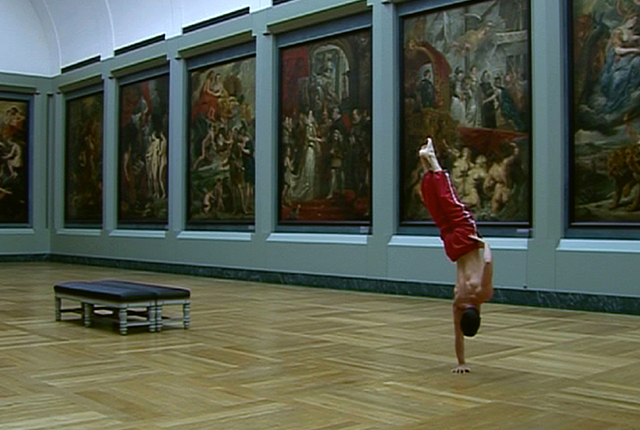
The Regulating Line, 2005
3’40”
Digital video
Produced on occasion of the 51st Venice Biennale-Swiss Pavilion
Made with the kind collaboration of the Musée du Luvre, Paris
Cast: Frédéric Dessains
Courtesy the artist and Elisabeth Kaufman, Zurich
The Louvre. The Life of Marie de Medici by Rubens: an immense baroque opera mixing breast plates with naked voluptuous bodies, flowing draperies with rigid ships; inspired by classical mythology, Rubens treats the biography of the seventieth century queen in an epic way. A young man stands in the middle of this mise en scène. His only possible response seems necessarily physical.
Shahryar Nashat was born in Geneva, 1975 and now lives and works in Berlin. He studied Fine Arts in Switzerland and Holland, and participated in artist residencies in Germany and Italy. In 2005 he represented Switzerland at the 51st Venice Biennale. Since the year 2000, he has shown his work at various international film and video festivals. He was included in H-Box at Tate Modern, 2008 (Video commissions touring the Centre Pompidou in Paris; the MUSAC in León and the MUDAM in Luxembourg) and he held a solo show in Das Beispeil, Geneva, in 2008.
Cornelia Parker
Whitechapel Gallery, UK
Anthony Spira, curator
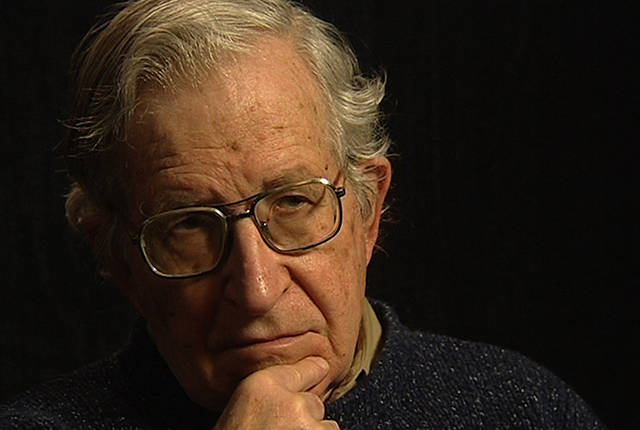
(41’48”)
DVD
Courtesy the artist and Frith Street Gallery, London.
Filmed on 9 March 2007 at Massachussets Instiute of Technology.
Co-commisioned by Sharjah Biennial 8, 2007, UAE and Ikon Gallery, Birmingham, UK
Parker recently interviewed the influential theorist Noam Chomsky and produced a video commissioned by the Sharjah Biennial. In the video, only the replies to Parker’s questions are heard, preceded by long, silent pauses. He speaks of the failure of governments, major corporations, institutions, and complicit media in looking after the planet. At the same time, Chomsky urges us to take responsability, to change our lifestyle and to engender serious socio-economic change.
Cornelia Parker was born in 1956 in Cheshi re, Inglaterra. She lives and works in London. She studied at the Gloucestershire College of Art and Design, the Wolverhampton Polytech nic and at Reading University.
She is best known for her large-scale installations, as well as her ongoing series of smaller formats. Her work is characterised by a forensic enquiry that often unearths and transforms disregarded substances, finding new currency for old as well as familiar objects.
“Parker has always been fascinated by humanity’s response to natural and cosmic phenomena. In a recent triptych of films titled Old Faithful, Parker turns the camera away from the famous geyser in Yellowstone Park, Wyoming in order to capture expectant sightseers, cameras at the ready, excitedly anticipating the natural eruption of water. The raw, unharnessed power of nature gradually turned the artist’s attention towards global warming, which she calls the ‘quieter apocalypse … [the] increasing chance that the planet may not be able to sustain human life by the end of this century’.
In an attempt to engage directly with important ethical and political issues in her work, Parker recently interviewed Noam Chomsky and produced a video commissioned by the Sharjah Biennial.”
“A static single camera angle fixates on the philosopher in close-up, inviting intense scrutiny of this iconic figure as he blinks, licks his lips, leans forward to hear a question, nods and strokes his chin.”
Diego Perrone
Galleria d'Arte Moderna e Contemporanea di Bergamo, GAMeC, Italy
Alessandro Rabottini, curator

2’30”
Cartoon filmed with Digital Betacam PAL
Courtesy Galleria Massimo de Carlo, Milan, Italy
Edition of 5
The animation portrays a group of children performing an act of pure and seemingly unmotivated aggression. Nothing in the designation of the victim reveals the existence of a will or logic that are not part of the game, and the roles of the aggressors are arbitrary and interchangeable with the role of the one being attacked. The violence ends exactly as it began: the immediate impulse of energy that generated it stops abruptly and is transformed into a moment of stunned incredulity and aching relief.
Diego Perrone was born in 1970 in Asti, Italy, although he lives and works in Berlin. His work probes the most intense aspects of human psychology, the moments of relations and existence. He had solo shows at MAMbo Museo d’Arte Moderna di Bologna and CAPC Musée d’Art Contemporain in Bordeaux (2007). His works were also exhibited as part of collective shows at the Guggenheim Museum in New York and the Musée d’Art Contemporain de Nimes in 2007, amongst others.
Ryan Trecartin
Ballroom Marfa, Marfa Texas, USA
Alicia Ritson, curator
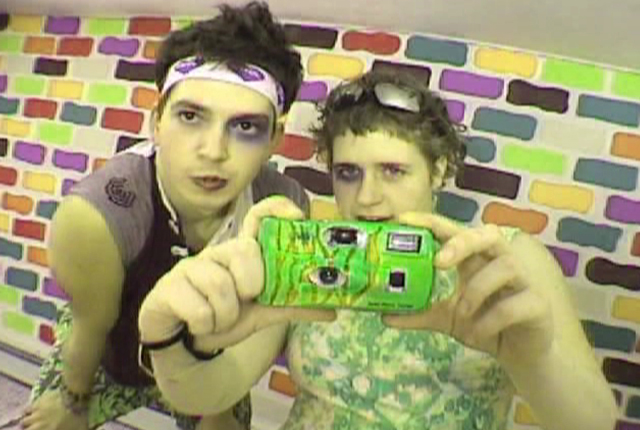
8’00”
DVD
Courtesy of the artist and Elizabeth Dee Gallery, New York
Ryan Trecartin was born in Webster, Texas, USA in 1981. He graduated with an MFA from the Rhode Island School of Design in 2004. He is among an emerging wave of artists who have grown up with the internet, and who are consequently making work informed by the evolution of net aesthetics, the hyperactivity of the world wide web and the proliferation of democratic broadcasting platforms like YouTube.
One of the artist’s first videos, the first in which he appears in front of the camera and presents himself as a ‘a video kid. Digital’. In this work, Trecartin strips the narrative right back to a video that addresses directly the artist’s process. He directs attention to the process of transmitting personalities through various media, and to the narrowing disjuncture between on-screen image and off-screen reality.